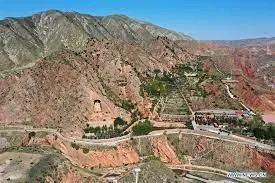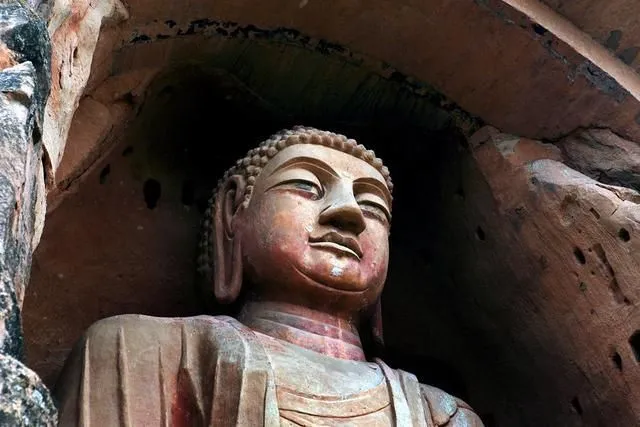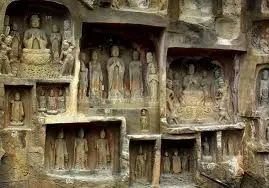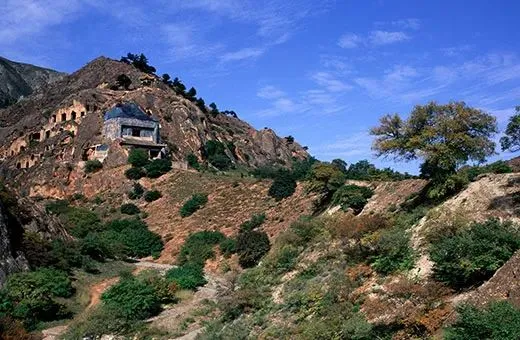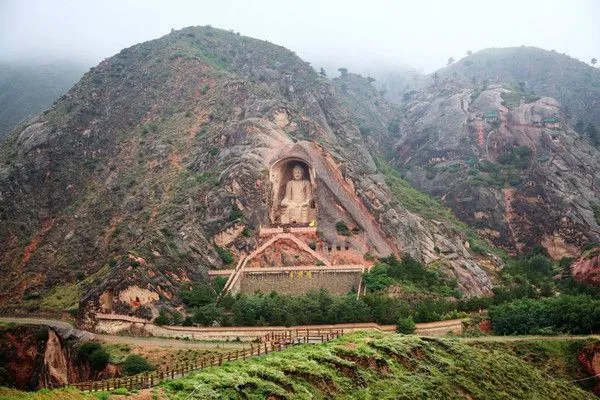
Xumishan Grottoes
Xumishan Grottoes Itinerary
Day 1: Arrival in Ningxia
Morning: Arrive in Yinchuan, the capital city of Ningxia Hui Autonomous Region. Afternoon: Check into your hotel in Yinchuan and take some time to rest or explore the city. Late Afternoon: Visit the Ningxia Museum to learn about the history and culture of the region, including exhibits on the Xumishan Grottoes. Evening: Enjoy dinner at a local restaurant, sampling traditional Ningxia cuisine such as hand-pulled noodles or lamb skewers.
Day 2: Xumishan Grottoes Exploration
Morning: After breakfast, take a scenic drive to the Xumishan Grottoes, located about 70 kilometers southwest of Yinchuan. Late Morning: Explore the Xumishan Grottoes, a UNESCO World Heritage Site known for its Buddhist cave art dating back to the Northern Wei Dynasty (386–534 AD). Admire the intricate sculptures and murals depicting Buddhist deities, stories, and symbols. Afternoon: Enjoy a picnic lunch amidst the natural beauty of the Xumishan area, surrounded by rolling hills and lush vegetation. Evening: Return to Yinchuan and dine at a local restaurant, reflecting on your day of exploration.
Day 3: Helan Mountain Scenic Area
Morning: Take a day trip to the Helan Mountain Scenic Area, located just outside of Yinchuan. Explore the mountain range, known for its rugged beauty, diverse flora and fauna, and ancient rock art. Late Morning: Visit the rock art sites of the Helan Mountain area, which feature petroglyphs dating back thousands of years. Learn about the cultural significance of these ancient carvings. Afternoon: Enjoy a scenic hike or drive through the Helan Mountain range, taking in panoramic views of the surrounding landscape. Evening: Return to Yinchuan and relax at your accommodation. Consider dining at a local restaurant to sample more Ningxia specialties.
Day 4: Shapotou Scenic Area
Morning: Take a day trip to the Shapotou Scenic Area, located along the Yellow River about 50 kilometers from Yinchuan. Explore the sand dunes, grasslands, and desert landscapes of the area. Late Morning: Experience camel riding or sand sliding on the sand dunes of Shapotou. Enjoy panoramic views of the Yellow River and surrounding scenery. Afternoon: Visit the Yellow River Museum to learn about the ecology, history, and culture of the Yellow River region. Take a leisurely stroll along the riverbank. Evening: Return to Yinchuan and dine at a local restaurant, savoring the flavors of Ningxia cuisine.
Day 5: Yinchuan City Tour
Morning: Take a guided city tour of Yinchuan, visiting attractions such as the Western Xia Imperial Tombs, the Haibao Pagoda, and the Nanguan Mosque. Late Morning: Explore the vibrant Dongmen Market, where you can shop for local handicrafts, souvenirs, and traditional foods. Afternoon: Visit the Yinchuan Art Gallery to view contemporary artworks by local and regional artists. Evening: Enjoy a farewell dinner at a local restaurant, reminiscing about your time in Ningxia and sharing memories of your journey.
Day 6: Departure
Morning: Enjoy a final breakfast in Yinchuan before checking out of your hotel. Late Morning: Depending on your departure time, you may have some free time for last-minute shopping or sightseeing. Afternoon: Transfer to Yinchuan Hedong International Airport for your onward journey.
Our Tour Details
-
Pick-up and Drop
-
Duration5N/6D
-
Starting Price₹/-
Frequently asked Questions:
The Xumishan Grottoes are located in Guyuan County, Ningxia Hui Autonomous Region, China, situated on the eastern bank of the Yellow River.
The Xumishan Grottoes are renowned for their Buddhist cave art and sculptures, dating back to the Northern Wei Dynasty (386–534 AD) and spanning several centuries, representing a significant cultural and historical heritage site.
The Xumishan Grottoes comprise over 130 caves, including niches, halls, and chambers, containing thousands of Buddhist statues, sculptures, and murals carved into the sandstone cliffs.
The Xumishan Grottoes were created over a period of several centuries, starting from the Northern Wei Dynasty (386–534 AD) and continuing through subsequent dynasties, including the Tang (618–907 AD) and Song (960–1279 AD) dynasties.
The main features of the Xumishan Grottoes include intricate Buddhist sculptures, elaborate carvings, colorful murals depicting Buddhist themes, and inscriptions documenting historical events and religious practices.
Yes, the Xumishan Grottoes are open to the public for tourism and cultural exploration. Visitors can explore the caves, admire the Buddhist art, and learn about the history and significance of the site.
Yes, photography is generally allowed in the Xumishan Grottoes for personal use. However, flash photography may be restricted in certain areas to preserve the delicate murals and sculptures.
Yes, guided tours led by knowledgeable guides are available for visitors who wish to learn more about the history, art, and architecture of the Xumishan Grottoes. Guides provide insights into the significance of the site and its cultural context.
Yes, there is an entrance fee to visit the Xumishan Grottoes, with ticket prices varying depending on factors such as age, residency status, and whether access to additional areas or facilities is included.
The Xumishan Grottoes are accessible by bus, car, or taxi from Guyuan City in Ningxia Hui Autonomous Region. Visitors can also join organized tours or hire a local guide to reach the grottoes and explore the site.

